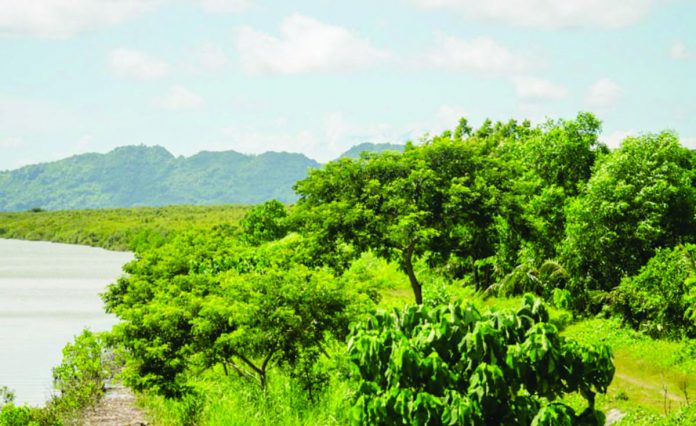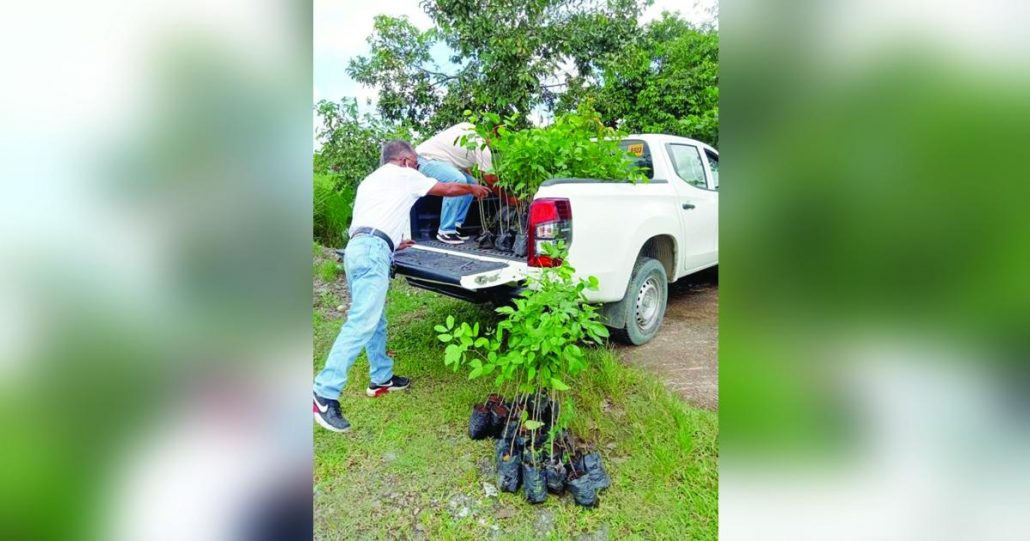
ILOILO City – True to its commitment to include environment in its development agenda, the Treñas administration has embarked on several environmental initiatives to create a greener and sustainable living environment for the Ilonggos.
Its “Green Green Green Projects” include massive tree planting and the establishment of green spaces in the metro.
The city government is also working on environment-friendly projects such waste-to-energy and an electronic transport system in partnership with the private sector.
In focusing on green projects, Mayor Jerry P. Treñas stressed that progress does not only mean having towering buildings, bridges and roads but also building green spaces and planting more trees to make the city livable.
“We want to preserve and nurture the environment to make Iloilo City one of the most livable metros in the country,” said Treñas.
These efforts also contribute to the fight against climate change and restore biodiversity.
MASSIVE TREE PLANTING

One of the notable undertakings of the city government through the City Environment and Natural Resources Office (CENRO) is the massive tree planting which especially involves propagating native trees in open spaces, floodways, roads, and plazas.
More than just greening the earth, planting native trees enhances heritage awareness and the sense of pride of the Ilonggos, especially that Iloilo is said to be the only place in the country which has a native tree named after it – the Iloilo tree (Aglaia argentea).
Also, part of the plan is to grow 2,000 native trees including the Iloilo tree along the 10-kilometer stretch starting from the service road of the Iloilo Airport in Santa Barbara town up to Barangay Ungka II, Pavia.
Iloilo City Executive Assistant for Environment Armando Dayrit earlier noted that Treñas wants to welcome the visitors with a beautiful sight of native trees and to emphasize that Iloilo is environment-friendly.
The city mayor also plans to require real estate developers, barangay officials and school heads to plant native trees in their areas every year.
The CENRO is also partnering with various sectors for the continuous propagation of mangrove trees in the city’s coastal areas.
TREE PARKS, GREEN TUNNELS, RESTORED PLAZAS
Also on top of the priorities in sustaining the environmental needs of the city is the proposed Tree Park Network Project.
Eco-forests in three districts – Iloilo Tree Park in Barangay Lanit, Jaro; Beach Forest in Barangay Boulevard, Molo; and Mangrove Eco-park in Barangay, La Paz – will be established.
Another part of the Green Green Green Projects is the establishment of “Green Tunnels” along Diversion Road in Mandurriao district side by side with over 30 waiting sheds with vines and plants as roofing along Diversion road’s public utility jeepneys loading and unloading bays.
These are all on top of the ongoing efforts of the city to restore district plazas to make them true people’s public spaces that are not only beautiful but also safe and promote healthy urban living.
Meanwhile, to augment the greening and beautification efforts, the city established a rainwater detention facility or cistern in La Paz plaza, and another one will be constructed in Jaro plaza.
The facility has proven its purpose especially during dry season in sustaining the flowers and other plants maintained by the city government.
EDIBLE LANDSCAPE
In Iloilo City, communities grow their own food, too.
Dubbed as JPT Ediscape (edible landscaping), the initiative aimed at fostering unity and empowering the community through barangay-based cultivation.
According to City Agriculturist Iñigo Garingalao, from vegetables, some Ediscape in other barangays have been integrated with chicken production, fishpond and few trees, all for food resiliency and security.
During the pandemic, some products from Ediscape were donated to the Uswag Community Kitchen for the consumption of health workers, COVID-hit patients in quarantine facilities and quarantine-affected families, among others.
JPT Ediscape also helped improve the nutritional status of beneficiaries, especially indigent families.
If there are abundant produce, some are sold and the proceeds are used to maintain the garden.
The initiative’s other significant impacts include livelihood opportunities to the community; access to healthy but cheaper produce; boost in psycho-social well-being of the Ilonggos; and clean and green environment.
ENVIRONMENT-FRIENDLY TRANSPORT SYSTEM
This southern city is also looking forward to having environment-friendly projects in partnership with the private sector.
One of these is the proposed e-vehicle (EV) bus rapid transit (BRT) which complements the city government’s efforts in making the city environmentally sustainable, livable and highly-urbanized.
The EV BRT as a low-carbon urban transport system is seen to not only reduce traffic congestion but also contribute to the development of the local economy while having a positive impact to the environment.
GREEN PUBLIC MARKETS
Another one is the redevelopment of the Iloilo Central and Terminal public markets, a public and private project between the city government and SM Prime.
SM Supermalls president Steven Tan earlier emphasized that alongside the focus on renewable energy, the redevelopment of the city’s two biggest public markets will introduce designs that maximize the use of energy and water, as well as efficient waste management.
Tan noted that the use of reflective roofs, green roof, reflective exterior walls, natural ventilation, skylights, LED lights, and smart meters are just among the initiatives to reduce power consumption. These practices are not only energy-saving but also contribute to practical and functional aesthetics for the markets.
WASTE-TO-ENERGY
Furthermore, the proposed waste-to-energy project by Metro Pacific Water Investment Corporation (MPW) is also in the pipeline.
According to Treñas, the project, which will be carried out through a public-private partnership scheme, will not only provide a sustainable and efficient solution for managing the city’s waste but also present a remarkable opportunity for economic growth.
Powered by advanced technologies and innovative waste management practices, it will revolutionize the handling of the city’s waste stream.
Through this cutting-edge infrastructure, the abundance of waste materials will be harnessed to generate renewable energy, reducing the city’s carbon footprint, thereby contributing to the fight against climate change./PN



